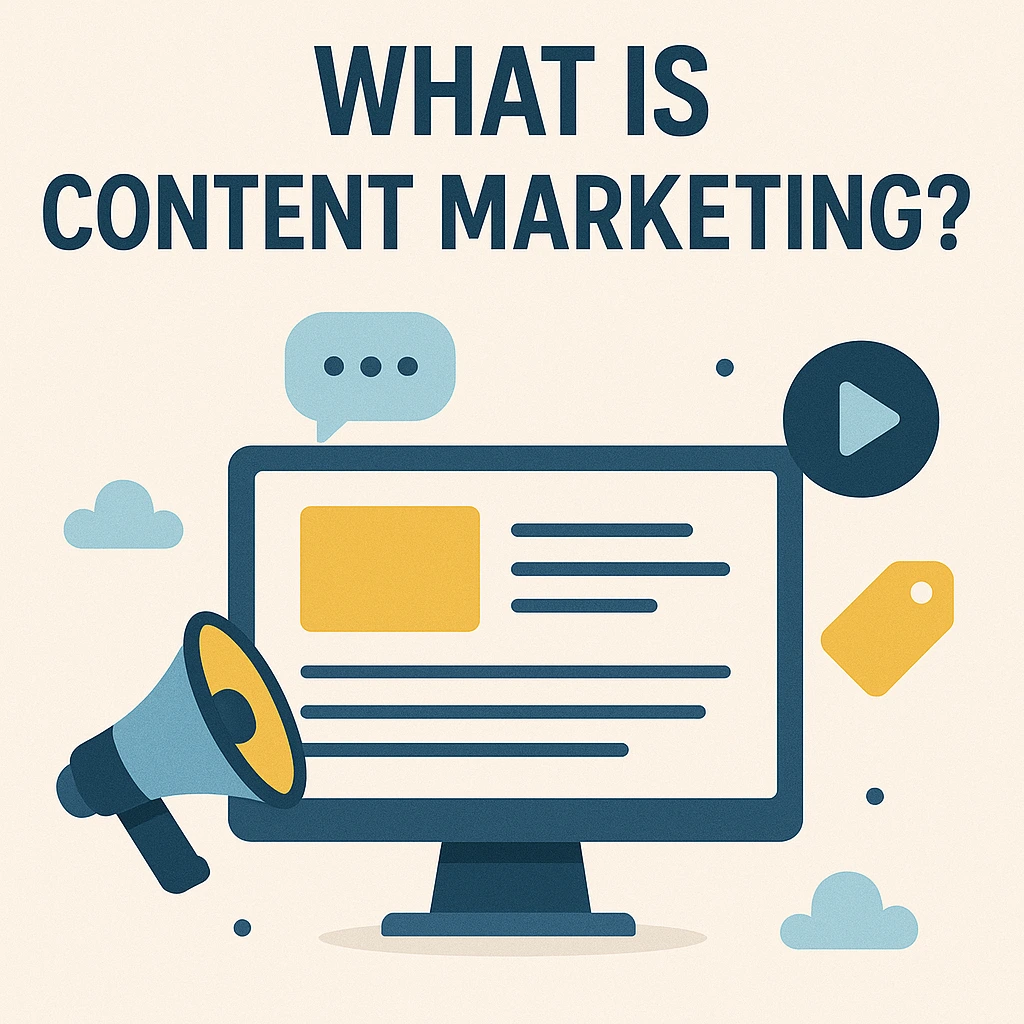Increasing website traffic is a critical goal for every online business, blogger, and website owner. Content marketing is one of the most powerful and sustainable methods to attract visitors organically. Unlike paid ads, content marketing builds trust and authority, leading to consistent, long-term traffic growth. This guide will explain step-by-step how you can increase website traffic using content marketing, with clear strategies aligned with Google’s policies.
What Is Content Marketing?
Content marketing involves creating and sharing valuable, relevant, and consistent content to attract and engage a clearly defined audience. The idea is to provide information, answer questions, and solve problems that your potential visitors have, rather than pushing products aggressively. This approach builds trust and brand loyalty, encouraging users to keep returning.

Why Is Content Marketing Important for Website Traffic?
Search engines like Google reward websites that consistently publish helpful, original, and well-structured content. By focusing on the user’s needs and search intent, your website’s pages become more discoverable and rank higher in search results. This increases organic traffic, reduces bounce rates, and improves overall site engagement.
Define Your Target Audience and Set Clear Goals
Before creating content, it’s essential to understand who your target audience is and what you want to achieve to effectively increase website traffic using content marketing.
How to Define Your Audience?
Identify your ideal visitor by considering their demographics (age, gender, location), interests, challenges, and online behavior. Creating audience personas helps you tailor your content to address their specific needs, making your content more relevant and engaging.
Setting SMART Goals for Traffic Growth
Your goals should be Specific, Measurable, Achievable, Relevant, and Time-bound (SMART). For example, aiming to increase website traffic by 20% in six months or growing newsletter subscribers by 500 in three months. Clear goals help you measure your progress and adjust your strategy accordingly.
Conduct Effective Keyword Research
Keywords are the backbone of SEO and content marketing. They tell you what your audience is searching for.
Tools and Techniques for Keyword Research
Use tools like SEMrush, Ahrefs, Google Keyword Planner, or Ubersuggest to discover keywords related to your niche. Look for keywords with good search volume but low to medium competition to maximize your chances of ranking. The keyphrase “increase website traffic using content marketing” is a perfect example, and including it naturally throughout your content will help improve visibility.
Create High-Quality, SEO-Optimized Content
Quality content is essential to attract and retain visitors. Here’s how to ensure your content performs well and helps increase website traffic using content marketing effectively.
Write In-Depth and Comprehensive Blog Posts
Google prefers long-form content that covers topics thoroughly. Aim for 1800 to 2000 words per post. Break down your content into sections with descriptive H2 and H3 headings. This makes your article easy to read and helps Google understand your content better.
For example, when discussing website platforms, you might say: “To compare different platforms, check out our detailed guide on Google Sites vs WordPress.” This internal link naturally guides readers to related content without disrupting flow.
Use Internal Linking to Boost SEO and User Engagement
Internal links improve your site’s structure, help search engines crawl your website efficiently, and keep users engaged longer. For example, when explaining SEO strategies, you could mention: “Learn more about effective SEO consulting in our article on how SEO consulting improves your online visibility.”
Optimize Content for On-Page SEO
Include your keyphrase in the page title, URL, meta description, first paragraph, and headings. Use short paragraphs, bullet points, numbered lists, and descriptive image alt texts. Ensure your page loads fast by compressing images and using a reliable hosting service.
Diversify Your Content Formats to Reach a Wider Audience
Beyond blog posts, repurpose your content into different formats to maximize reach.

Video Content
Create videos explaining key topics or tutorials related to your niche. Videos often get more engagement and can drive traffic from platforms like YouTube and social media.
Infographics and Visual Content
People love visuals. Infographics simplify complex data and are highly shareable, driving traffic back to your site.
Podcasts and Webinars
Audio content like podcasts and live webinars allow you to connect with audiences who prefer listening over reading.
Promote Your Content Strategically
Great content needs promotion to reach your target audience effectively.
Use Social Media Marketing
Share your posts on Facebook, Twitter, LinkedIn, Pinterest, and Instagram. Tailor your message to fit each platform, use relevant hashtags, and post consistently. Engaging captions and attractive images increase shares and clicks.
Email Marketing
Build an email list and send newsletters featuring your latest content. Craft compelling subject lines and clear calls to action to increase open and click-through rates.
Influencer and Community Engagement
Collaborate with industry influencers or participate in online communities like Reddit or niche forums. Sharing your content with these audiences can drive targeted traffic.
Measure Your Content’s Performance and Improve Continuously
Regularly analyzing your content performance helps you focus on what works and improves your ability to increase website traffic using content marketing effectively.
Use Google Analytics and Search Console
Track key metrics like page views, bounce rates, session duration, and conversion rates. Identify which content pieces bring the most traffic and engagement.
Refresh and Update Old Content
Keep your existing content relevant by updating facts, adding new insights, and improving readability. This signals Google that your content is current, helping maintain or improve rankings.
Frequently Asked Questions (FAQs)
How long does content marketing take to increase website traffic?
A: Typically, 3 to 6 months, depending on niche competition, content quality, and promotion efforts.
How often should I publish content?
A: Aim for 1 to 2 posts per week. Focus on quality and consistency rather than quantity.
Can I reuse blog content in other formats?
A: Yes, repurpose blog posts into videos, podcasts, infographics, or social media content for broader reach.
Is content marketing effective for small businesses?
A: Absolutely, it builds trust and leads cost-effectively over time.
What tools help with content marketing?
A: SEMrush, Google Analytics, Ahrefs, Yoast SEO, Grammarly, and others assist with research, optimization, and writing.
Why aren’t my articles indexing on Google?
A: Ensure your content is original, valuable, well-optimized, and adheres to Google’s guidelines. Check your indexing status in Google Search Console.
What defines high-quality content?
A: Content that is relevant, accurate, comprehensive, easy to read, and valuable to the audience.
Should I include external links in my content?
A: Only if they add value and come from reputable sources. Prefer internal linking to strengthen your site’s SEO.
Conclusion
Increasing website traffic using content marketing is a gradual but rewarding process. By understanding your audience, conducting thorough keyword research, creating detailed and optimized content, and promoting it effectively, you set a strong foundation for organic growth. Incorporate internal links such as Google Sites vs WordPress and SEO Consulting to guide visitors and improve your site’s SEO structure. Consistency, quality, and continuous improvement are key to lasting success.

